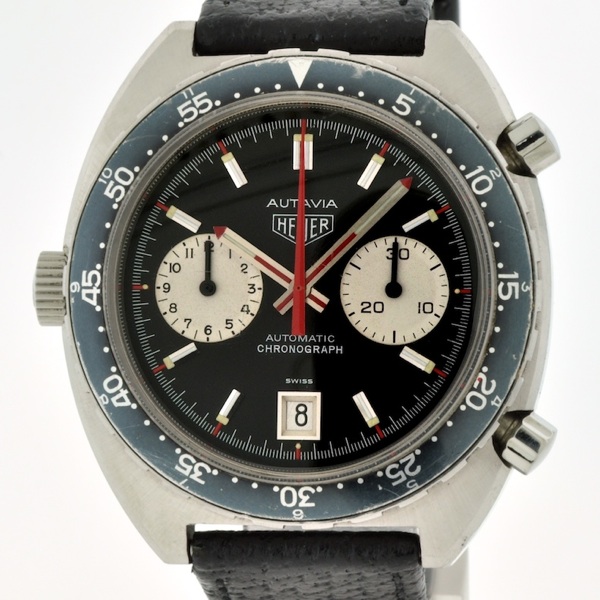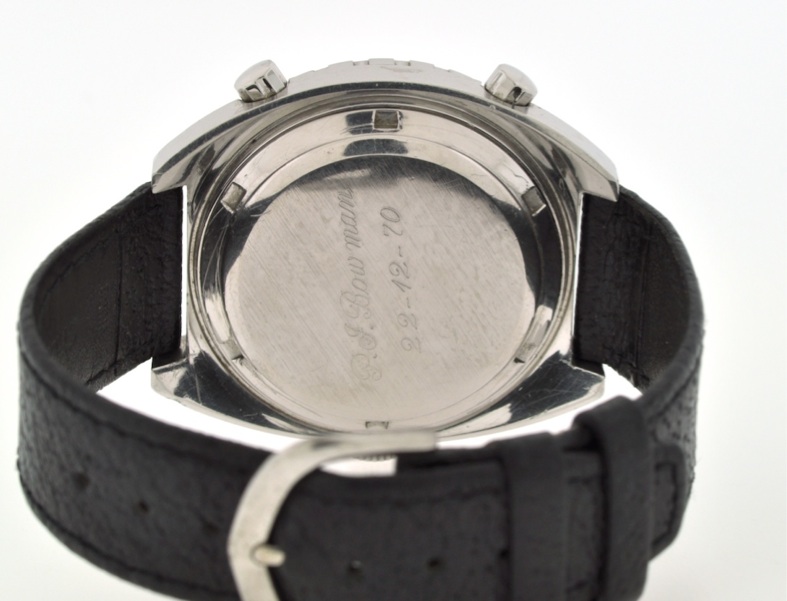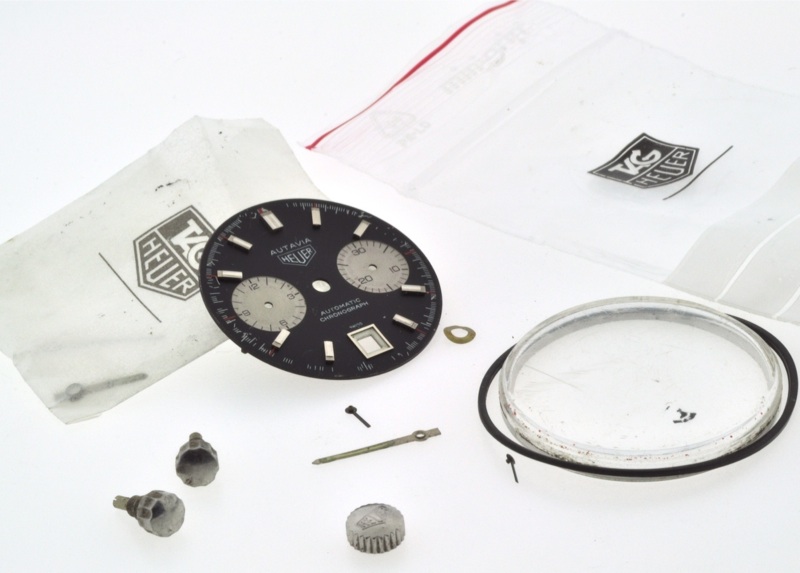A few months ago, we had a posting about a very rare Chronomatic Carrera that had been destroyed by a local jeweler. The jeweler had the dial refinished, thinking that the customer would be pleased to have a nice fresh coat of paint, rather than the aged dial of the original watch. I would estimate that this little surprise for the customer took the value of this watch from something like $5,000 to $7,000 to around $1,000. [In understanding these values, I should also mention that the movement had been replaced, but we don’t know exactly when that occured . . . perhaps another little “surprise” from a jeweler!]
Today, we see an eBay listing for an Autavia that started life (in 1970) as a 1163 MH and — through the work of a service center — the watch has ended up as nothing but a mess.
The original watch was an Autavia Reference 1163 MH, with the distinctive features of an early automatic Autavia — numerals 3-6-9-12 on the hour recorder and polished steel hands. In the servicing, the original dial and hands were replaced with parts for the “Viceroy” version of the Autavia — with 12 numerals on the hour recorder and brushed steel hands, with red accents. While the 1163 MH is one of the rare Autavias and is coveted by collectors, the 1163 Viceroy is probably the most common (highest volume) Heuer chronograph of all.
Proof of the damage is found by looking at the parts in the bag and the service ticket. In the bag, we see the original dial (3-6-9-12 on the hour recorder) and the pair of polished steel hands.
As compared with the Chronomatic Carrera disaster described above, the owner of this Autavia will have a couple of reasonable choices — (a) spend another stack of hundreds to have the original dial and hands put back on the watch (assuming that they fit properly and are in good condition), and then sell off the Viceroy dial and hands, or (b) sell off the original 1163 MH parts, and think of it as a discount against the price of the watch, in its current condition.
So what is the value of the watch, with the original parts in place, in good condition? Probably a shade over $3,000 . . . maybe $3,500. And the value of the watch as we see it today, along with the bag of original parts? I’m guessing something below $2,000. A purchaser will need to spend money to have the watch re-restored. Perhaps a watchmaker will buy it, and then undertake the project. It doesn’t take a mathematician to realize that paying to have the watch ruined and then paying again to have it put back as it was is not a good use of money.
Ladies and gentlemen, when you send your watch in for any type of servicing — whether a simple cleaning, a full overhaul or a restoration — you will do well to spend a few minutes communicating with the watchmaker or the service center, to tell them what should be done (and exactly what should NOT be done). Some watchmakers prefer the fresh parts (and paint); most collectors don’t!
+++++++++++++++++++++++++++++++
Update: Seller has informed me that the original parts had water damage, so my suggestions of either (a) having the original parts put back on the watch or (b) selling off the original parts, do not appear to be realsitic. My opinion of what this watch and its parts are worth: somewhere in the area of $1,000 / $1,200.



